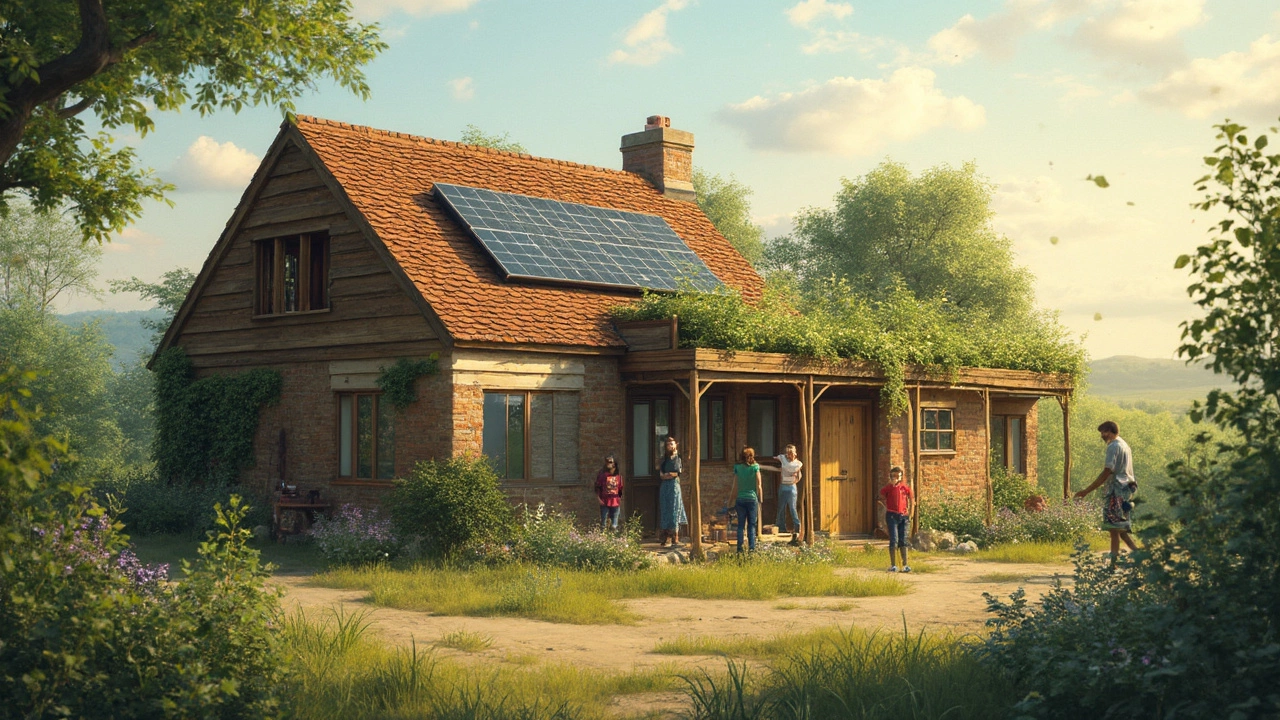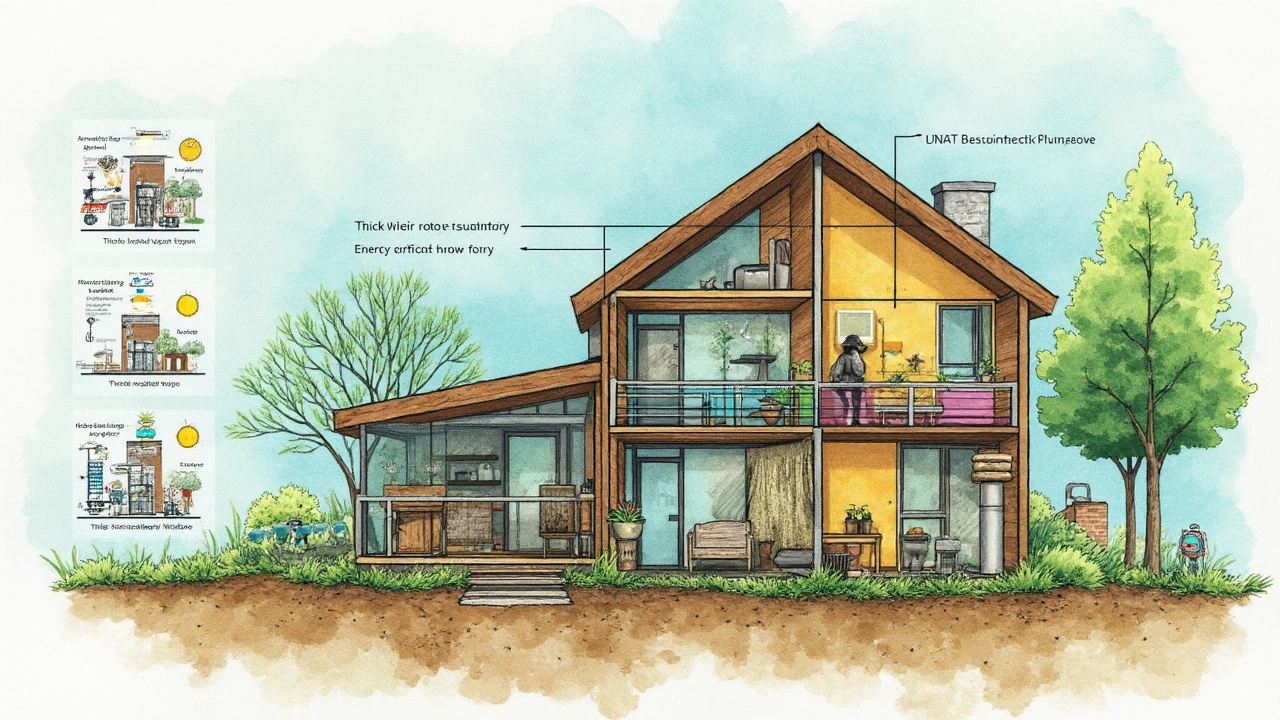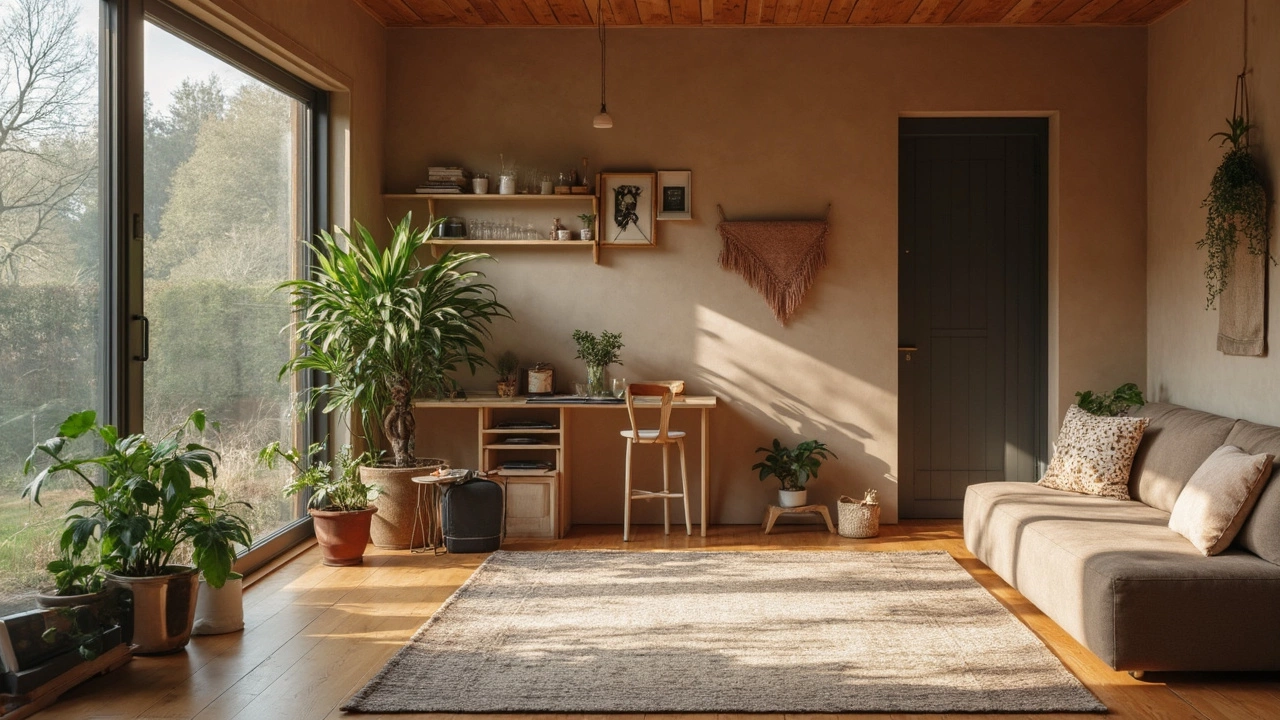Build a Cheap Eco-Friendly House: A Practical Guide

Thinking about building an eco-friendly house without spending a fortune? You're in the right place. It might sound like a juggling act, but it's not as complicated as it seems. The trick is to blend sustainability with cost-saving techniques, and voila, you've got yourself a green haven that's kind to both nature and your wallet.
First things first, let’s talk about where you're going to plant your new roots. Site selection is crucial. Look for a spot that maximizes natural light to reduce energy needs. Depending on what’s around, you may have access to natural windbreaks or water sources, both of which can further cut costs.
When it comes to material choices, think recycled and reclaimed. Reclaimed wood, recycled metal, and even certain types of bamboo are not just wallet-friendly, but they also provide a unique aesthetic that's hard to beat. By sourcing locally, you save on transportation costs and reduce your carbon footprint.
- Setting the Foundation: The Importance of Site Selection
- Choosing Affordable and Sustainable Materials
- Energy Efficiency: Saving Money and the Environment
- DIY Techniques for the Budget-Conscious Builder
- Long-term Savings: Maintenance and Upkeep
Setting the Foundation: The Importance of Site Selection
When you're kickstarting the journey of building your eco-friendly house, the first big decision is picking the perfect plot of land. You want a spot that not only suits your lifestyle but also aligns with your sustainability goals. So why does site selection matter so much? It affects everything from energy efficiency to the overall cost.
A key factor to consider is sun exposure. Choose a site with ample sunlight to harness solar power, reducing both energy consumption and bills. South-facing properties typically offer the best potential for soaking up the sun, which is a huge bonus for anyone interested in green building. Make your sustainable living dreams a reality by prioritizing locations that maximize sunlight.
Natural Protections
Sites with natural windbreaks like trees or hills can also be advantageous, as they reduce heating costs by providing shelter from cold winds. They can act as natural insulation for the house, maintaining a comfortable environment inside with minimal energy use.
Water and Drainage
Don't forget to check water availability and drainage. A slope directing rainwater away from the foundation prevents water damage and saves future headache and expense. If there's a possibility to integrate rainwater harvesting systems, you’re setting up for even more sustainable living options.
Community Resources
Think about the community too. Sites closer to amenities reduce the need for driving, slashing your carbon footprint. Plus, being near public transport can be another green living advantage, especially if you prefer grabbing a bus instead of driving.
Here's a handy tip: conducting a soil study might be worth considering. Good soil quality can ease construction hassles and costs, and some soils even improve the insulation factor of the building. Investing time at this stage saves lots of time and money down the line.
Choosing Affordable and Sustainable Materials
When you're thinking about building a cheap eco-friendly house, your choice of materials can make or break your budget and environmental goals. Picking the right stuff isn't just about saving money upfront but also about minimizing future expenses and environmental impact.
Go Local, Save More
One of the easiest ways to keep costs down and reduce your project's carbon footprint is by using local materials. Transporting materials from far away not only adds costs but also boosts carbon emissions. Stone, sand, and timber might be available nearby; these can serve as the backbone of your construction needs.
Embrace Recycled and Reclaimed Resources
Reclaimed wood, recycled metal, and repurposed bricks are not only economically savvy choices, they also support sustainability. Imagine crafting a stunning kitchen with reclaimed barn wood, giving a rustic charm that new materials can't quite match. And don’t forget about recycled metal roofing, which is lighter on the wallet and holds up well against the elements.
Bamboo: The Sustainable Wonder
Bamboo is a fantastic resource if you’re looking for something that grows quickly and doesn't deplete local resources. Known for its speed of growth and strength, bamboo can be used in everything from flooring to decorative elements. Plus, it's relatively cheap, which hits the sweet spot for budget-conscious builders.
Eco-Friendly Insulation
Staying warm (or cool) is essential, and choosing the right insulation is part of the strategy. Consider recycled cotton or even sheep wool for insulation. They're not only friendly to the Earth, but they also perform exceptionally well. Sheep wool, in particular, is superb at regulating moisture.
As a guide, here's a snapshot of the potential savings when opting for sustainable materials:
| Material | Potential Savings (%) |
|---|---|
| Reclaimed Wood | 30-50 |
| Recycled Metal | 20-25 |
| Local Stone | 15-30 |
| Bamboo | 20-40 |
As the table shows, these materials don't just help save the planet; they’re also easier on your bank account.

Energy Efficiency: Saving Money and the Environment
Making your home energy efficient isn't just good for the environment; it’s a super smart way to keep bills low. Think of it as an investment that just keeps on giving. So, how do we get started?
Insulation: The Key to Comfort
The first step is proper insulation. Insulating your walls, roof, and floor helps keep the heat in during the winter and the cool air in during the summer. Materials like sheep’s wool or cellulose, made from recycled paper, are eco-friendly and cost-effective options.
Lighten Up with LED
Switch out those old bulbs for LED lights. They use at least 75% less energy and last 25 times longer than incandescent lighting. That’s a win for your wallet and the planet!
Solar Power: Harnessing the Sun
Installing solar panels might seem pricey upfront, but the payoff can be fantastic. In some regions, you can generate enough energy to cut your electricity bill down significantly. Keep an eye out for government incentives that could slash installation costs.
Efficient Appliances Matter
When it’s time to replace your appliances, look for ones with the ENERGY STAR label. They’re made to save energy without compromising on performance. Starting with big-ticket items like the refrigerator and washer can make a notable difference.
Smart Home Technology
Consider investing in a smart thermostat. It learns your habits and schedules the heating and cooling systems accordingly, optimizing energy use even when you’re not thinking about it. They’re relatively cheap and easy to install, yet they offer substantial savings.
With these tips in action, not only are you lightening your eco-friendly house's impact on the environment, but you’re also keeping more of your hard-earned cash in your pocket. It’s that simple!
DIY Techniques for the Budget-Conscious Builder
So you're pumped about the idea of building an eco-friendly house without spending a ton, right? Let's roll up those sleeves and get into some DIY action that's friendly for your budget and the environment. From getting your hands dirty with natural insulation techniques to crafting your own furnishings, there are plenty of ways to save big while going green.
Insulation on a Dime
Keeping your home warm in winter and cool in summer is key. Try using straw bales for insulation. They’re cheap, effective, and super sustainable. You can stack them tightly in the wall cavities, and they offer great thermal mass. Cellulose insulation, often made from recycled paper, is another good bet, providing solid R-values without the hefty price tag.
Power of Solar Panels
Building your own solar panels might sound nuts, but it’s doable and affordable. You’ll need a solar panel kit, some basic tools, and a little grit. It’ll definitely cut down on energy costs in the long run, and hey, you get to brag about being a mini electrical engineer.
Reusing and Repurposing
Using what you already have can save cash and add character. Old windows can become sunrooms or cold frames for gardening. Wooden pallets are great for making furniture; think coffee tables, bed frames, or even storage solutions. There's something special about using materials that have their own history.
| DIY Project | Est. Savings ($) |
|---|---|
| Solar Panel Installation | 3,000 - 5,000 |
| Straw Bale Insulation | 2,000 - 4,000 |
| Pallet Furniture | Varies by Project |
Remember, every little project adds up to huge savings. By embracing these DIY methods, not only are you building an affordable eco-friendly house, but you're also adding unique touches that make your home truly yours. Plus, you'll likely impress the heck out of your friends with your newfound skills!

Long-term Savings: Maintenance and Upkeep
So, you've built your eco-friendly house, and now it's time to think about how to keep it in tip-top shape without draining your savings. The key is to be proactive rather than reactive with maintenance. Regular check-ups and small fixes can prevent costly repairs down the line, keeping your house eco-friendly and efficient.
Regular System Checks
Start with an annual audit of your energy systems. Whether it’s solar panels or a geothermal system, ensuring they’re running efficiently can save you a ton on utility bills. Get your hands dirty by cleaning panels or ducts, or hire a professional for a more thorough inspection. Keep tabs on your insulation, as well. Even high-quality materials can degrade over time, costing you in heating and cooling efficiency.
Natural Materials Maintenance
If you used natural materials like wood or bamboo, they might need some special care. Reclaimed wood can last a lifetime if treated right. Apply a protective finish to guard against the elements, especially in places like Vancouver where rain can be relentless.
Smart Landscaping
Don’t overlook your outdoor spaces. A clever landscape design can improve your home’s efficiency and cut down on water use. Aim to use native plants; they're naturally more resistant to local pests and require less water. Drip irrigation systems are efficient ways to water plants with minimal waste, saving you money and conserving resources.
Cost-effective Strategies
- DIY Maintenance: Learn basic repairs and maintenance for quick fixes.
- Rainwater Harvesting: Install a system to collect rainwater for gardening or flushing toilets.
- LED Lighting: Replace bulbs with LED ones for long-lasting, energy-efficient lighting.
Being smart about maintenance and upkeep doesn't just save money—it ensures your eco-friendly house remains a beacon of sustainability for years to come.